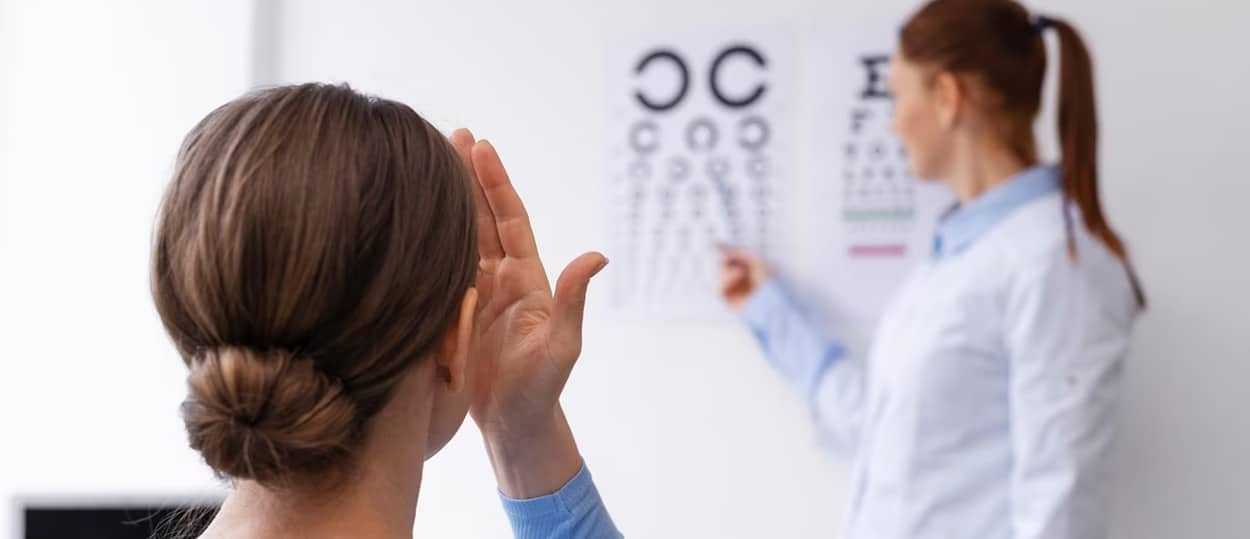Working closely with a Scottish manufacturer, our technical design team produced an incredible gearmotor for eye test equipment. The manufacturer makes devices that specifically capture images of the retina (the part of your eye that receives light).
The machine was first developed to help the founder's young son who suffered from a detached retina and had to undergo frequent eye exams. The limited scope of existing machines made the exams take a long time and had limited effectiveness. The new machine offered a wider field of view than any other and over the years following has been developed into a flagship product.
Product: SP3364
SYB3520-048-120-12 12V 0.8MOD 12T 6MM WIDTH
Product: SP3481
SP3481 17HB/7.2 VPH/DOUBLE SHAFT

The final application & solution
The device is one of the most advanced cameras in large-scale production. The most important step in taking a clear image is physically positioning the camera, subject and lenses to produce a clear, sharp image. The positioning can be achieved with our 35mm stepper motor.
Our motor is used to drive a rack and pinion system that moves the camera into alignment with the patient. A high-accuracy hybrid stepper motor is also used to position the mirror that forms part of the magnification system.
| Are you looking for a similar gearmotor for your product? Call our friendly team on +44 (0) 1460 72000 |

Enhancing Eye Testing Equipment with Miniature Gear Motors
Eye examinations are fundamental for assessing visual acuity, diagnosing eye conditions, and prescribing accurate eyewear or treatments. To ensure the highest level of precision and efficiency in eye testing, the integration of cutting-edge technology is crucial. One such technology is miniature gear motors, which can significantly enhance the capabilities of eye-testing equipment. In this article, we'll explore how miniature gear motors can revolutionize eye testing equipment, leading to more accurate diagnoses and improved patient experiences.
Precision Lens Positioning
One of the key applications of miniature gear motors in eye testing equipment is precise lens positioning. Instruments like phoropters, which optometrists use to fine-tune prescriptions, can benefit immensely from motorized adjustments. Miniature gear motors allow for quick and accurate lens positioning, making it easier for optometrists to refine prescriptions with pinpoint accuracy.
Focus Control
Instruments such as slit lamps and fundus cameras require precise focus control to examine various parts of the eye. Miniature gear motors can be employed to adjust focus with incredible precision, enabling detailed examination and imaging.
Eye Chart Positioning
The positioning of eye charts is critical during vision testing. Motorized gear systems can effortlessly adjust the height and distance of eye charts, ensuring accurate positioning for different testing scenarios.
Automated Test Sequences
Miniature gear motors can be programmed to move different components of eye testing equipment in predefined sequences. This automation is invaluable for conducting a series of tests automatically, reducing the workload on the operator.
Consistency and Reproducibility
Motorised components ensure that testing conditions remain consistent across different patients and multiple testing sessions. This consistency enhances the reproducibility of test results, a critical factor in effective eye care.
Automated Refraction
Automation is a game-changer in the field of eye testing. By integrating miniature gear motors, eye testing equipment can automate the refraction process, where lenses are presented sequentially to the patient. This automation minimizes human error and drastically improves both the speed and precision of the testing.
Pupil Dilation
Certain eye exams necessitate pupil dilation. Miniature gear motors can control the size of the aperture with consistency and precision, ensuring that the dilation process is comfortable and controlled for the patient.
Tracking and Alignment
Eye testing equipment designed to assess issues like strabismus or eye teaming can greatly benefit from miniature gear motors. These motors help maintain precise alignment during testing, resulting in more accurate evaluations.
Reducing Operator Fatigue
Mechanising adjustments with miniature gear motors reduces the physical strain on operators. This, in turn, allows operators to focus more on patient interactions and data analysis rather than manual adjustments.
Customisable Testing
Miniature gear motors can be easily programmed to accommodate specialized testing protocols. This flexibility enables the performance of more advanced and tailored assessments of visual function.
Incorporating miniature gear motors into eye testing equipment not only enhances the accuracy and efficiency of eye exams but also improves the overall patient experience. Nevertheless, it's crucial to consider factors such as precision, noise levels, and durability when selecting and integrating these motors into such devices.
In conclusion, miniature gear motors have the potential to revolutionise eye testing equipment, elevating the quality of care that patients receive. As technology continues to advance, we can expect to see even more innovative applications of these motors in the field of optometry, further improving the accuracy and efficiency of eye examinations.











